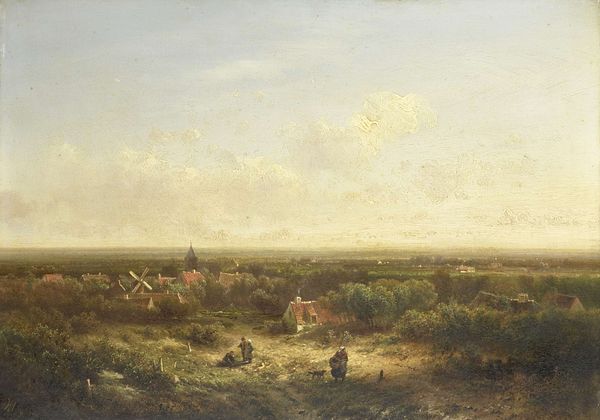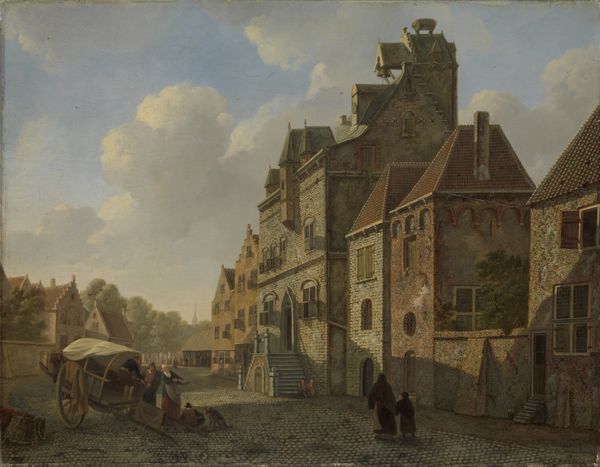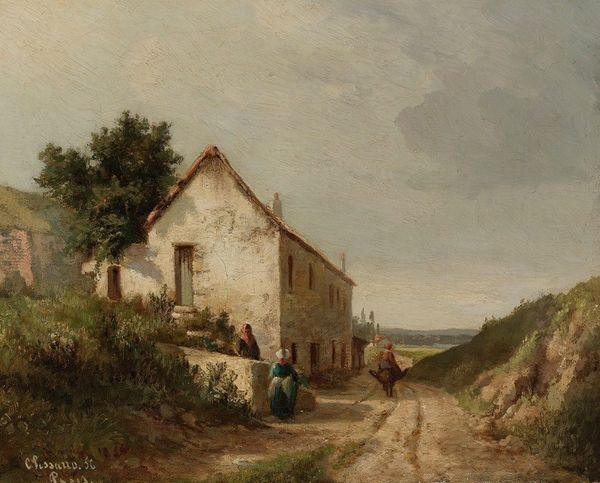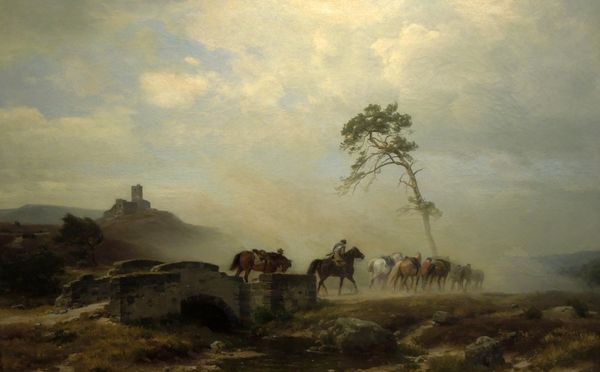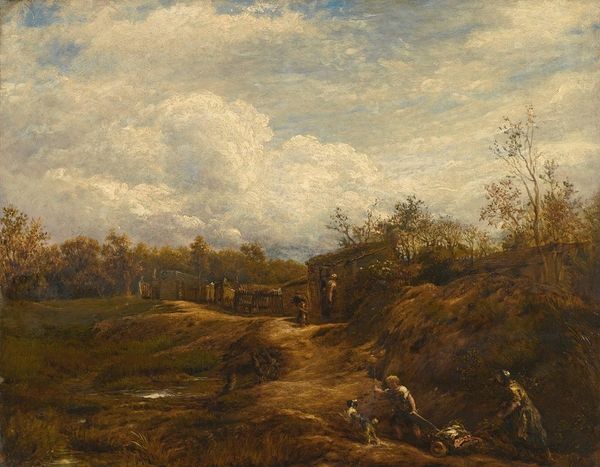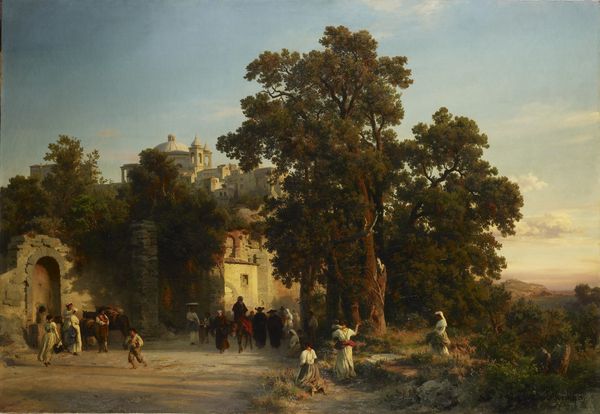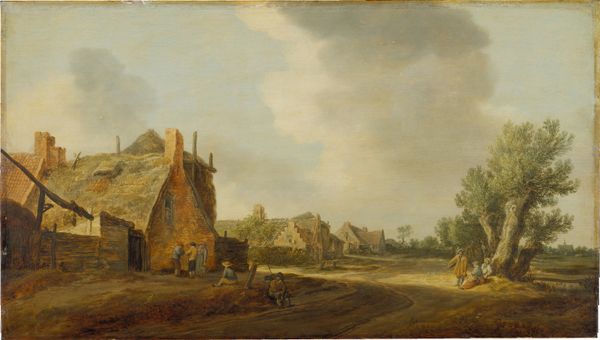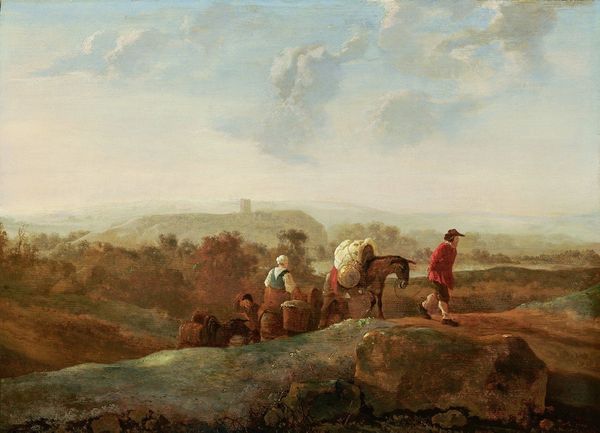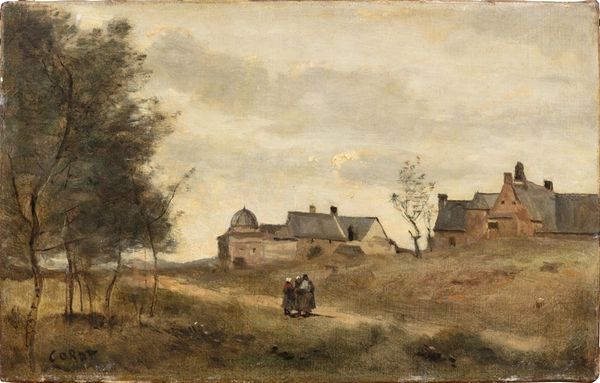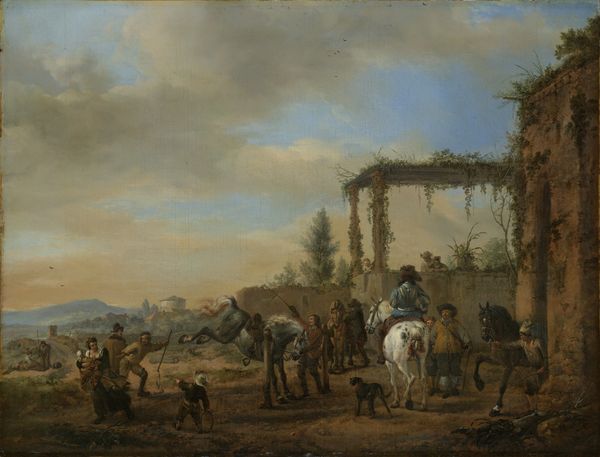
Copyright: Public Domain: Artvee
Curator: I am just completely drawn into this little road that disappears off toward the windmills. They are almost dream-like, distant, like remnants of a forgotten time. It has this wonderful wistful feeling. Editor: That road invites speculation. You're looking at "View on Montmartre" by Johan Barthold Jongkind, circa 1850, rendered with oil paint in a way that captures the transition from Romanticism to early Impressionism. I see a commentary on industrial change, with the rural giving way to urban development. Curator: Definitely! It is melancholic, though, right? The light feels heavy, a stillness... like a moment suspended. And it is interesting that you mention Romanticism; the artist makes great use of light effects and the picturesque. But I suppose it depends how much value we place on this quaint sensibility... Editor: The picturesque itself becomes problematic when considering power dynamics. Jongkind depicts the windmills as quaint, but they represented technological advancement and the shift of labor that invariably led to exploitation and unequal access. Is he celebrating progress or lamenting a loss, or is it a little more ambivalent than that? Curator: Ah, such a wonderful reading! But maybe the allure lies precisely in its ambivalence. Isn't that the beauty of art—the ability to hold conflicting ideas, nostalgia, and critical awareness simultaneously? This is where our response turns truly personal, informed by experience and cultural framework. The materiality of the work only amplifies this feeling, giving everything a tangible grounding. Editor: Absolutely. The layers of paint and the artist's plein-air approach underscore the temporality, the feeling that you described. Jongkind is literally embedding a specific time and place within the work, and so when considering his role as an artist, the artwork speaks of so much more than meets the eye. We need to appreciate the contradictions and silences, those "in-between" spaces where history and the artist’s interpretation intertwine. Curator: "The contradictions and silences," I love that. It gives me a new lens through which to consider how my own identity and perspectives color my perception. Editor: Indeed. Every work demands a rigorous self-examination. We all need to be conscious of whose narratives gain precedence in our interpretations, and for whose at a historical period.
Comments
No comments
Be the first to comment and join the conversation on the ultimate creative platform.


